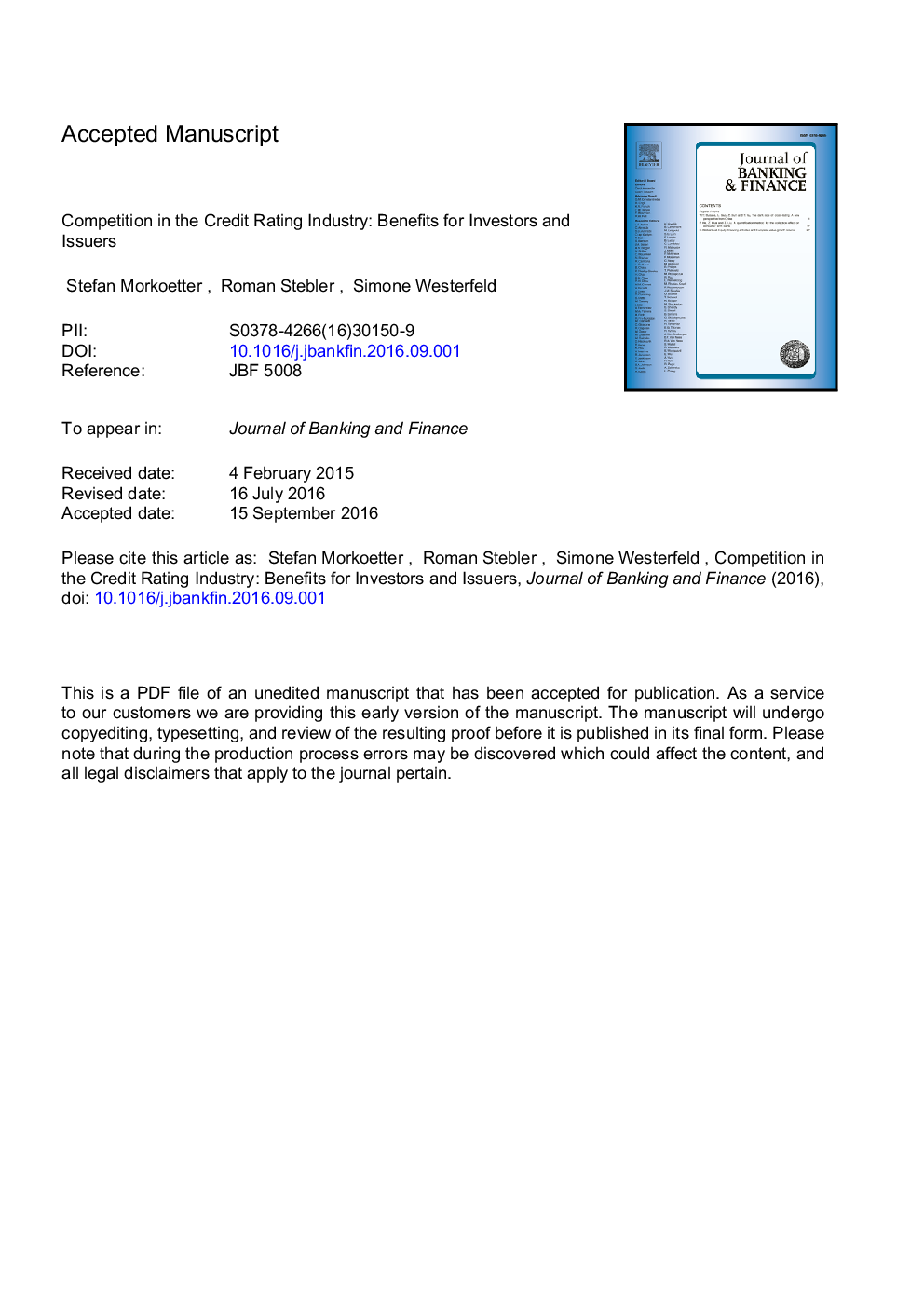| Article ID | Journal | Published Year | Pages | File Type |
|---|---|---|---|---|
| 5088169 | Journal of Banking & Finance | 2017 | 55 Pages |
Abstract
We empirically investigate the benefits of multiple ratings not only at issuance of debt instruments but also during the subsequent monitoring phase. Using a record of monthly credit rating migration data on all U.S. residential mortgage-backed securities rated by Standard & Poor's, Moody's, and Fitch between 1985 and 2012 (154,600 tranches), our results provide empirical evidence that rating agencies put more effort in rating and outlook revisions when tranches have assigned multiple ratings. Furthermore, we see that in the case of multiple ratings, agencies do a better job in discriminating tranches with respect to default risk. On the downside, we observe a shift in collateral towards senior tranches and incentives for issuers to engage in rating shopping activities, but find no evidence that rating agencies exploit such behavior to attract more rating business. Our results contribute to the literature on information production of credit ratings and extend the perspective to the monitoring period after issuance.
Related Topics
Social Sciences and Humanities
Economics, Econometrics and Finance
Economics and Econometrics
Authors
Stefan Morkoetter, Roman Stebler, Simone Westerfeld,
